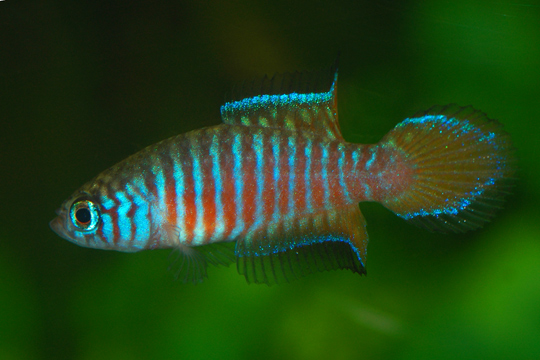The value of the binomial nomenclature system derives primarily from its economy, its widespread use, and the stability of names it generally favors:
- Every species can be unambiguously identified with just two words.
- The same name can be used all over the world, in all languages, avoiding difficulties of translation.
- Although such stability as exists is far from absolute, the procedures associated with establishing binomial nomenclature tend to favor stability. For example, when species are transferred between genera (as not uncommonly happens as a result of new knowledge), if possible the species descriptor is kept the same. Similarly if what were previously thought to be distinct species are demoted from species to a lower rank, former species names may be retained as infra-specific descriptors.

Simpsonichthys parallelus.
Despite the rules favoring stability and uniqueness, in practice a single species may have several scientific names in circulation, depending largely on taxonomic point of view. This is called synonymy.
The International Commission on Zoological Nomenclature (ICZN) is an organization dedicated to "achieving stability and sense in the scientific naming of animals". Founded in 1895, it currently comprises 28 members from 20 countries, mainly practicing zoological taxonomists. The Commission assists the zoological community "through generation and dissemination of information on the correct use of the scientific names of animals."

Carl Von Linné. Original painting dated 1775. Improved version uploaded March 1st, 2007.
The ICZN publishes the International Code of Zoological Nomenclature (a.k.a. "The Code"), containing the formal rules "universally accepted as governing the application of scientific names to all organisms which are treated as animals." The Commission also provides rulings on individual problems brought to its attention, as arbitration may be necessary in contentious cases, where strict adherence to the Code would interfere with stability of usage. These rulings are published in the Bulletin of Zoological Nomenclature.
Source: Wikipedia Dec. 2007